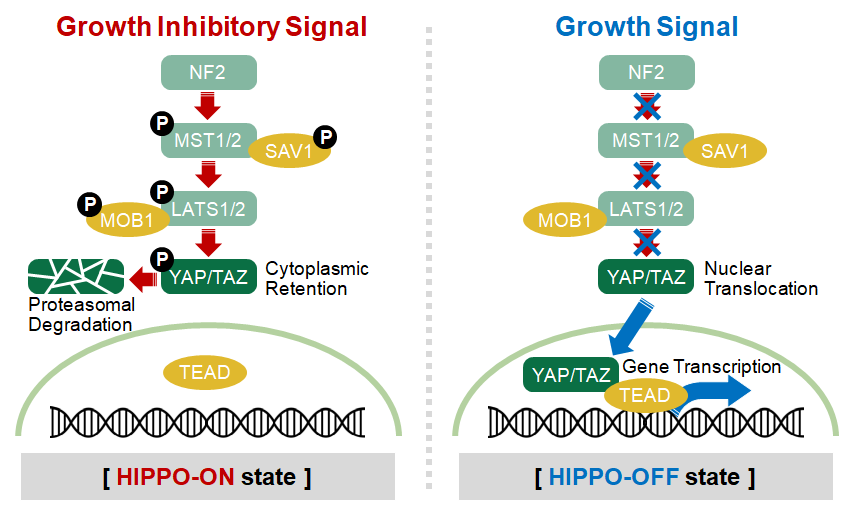Baobab AiBIO, we are developing new drugs focused on anti-cancer drugs and Neurodegenerative disease treatments with SBDD(Structure-based drug discovery) platforms.
SCIENCE
Pipeline
BAB-104 TEAD Inhibitor
Preclinical
HIPPO SIGNALING PATHWAY
HIPPO SIGNALING PATHWAY regulatescontrols organ size in animals through the regulation of cell proliferation and apoptosis, and the target gene expression in the nucleus is determined by the HIPPO ON/OFF signal states. Loss of function mutations of the HIPPO SIGNALING PATHWAY overexpress TEAD transcription factors, which bind with YAP/TAZ, and this dysregulation causes various cancers including malignant mesothelioma, meningioma, and NSCLC.
HIPPO-ON state
LATS1/2 phosphorylates YAP/TAZ, and the entry of phosphorylated YAP/TAZ into the nucleus is restricted. In this case, YAP/TAZ is either retained in the cytoplasm or protein degradation
HIPPO-OFF state
YAP/TAZ accumulates in the nucleus and interacts with TEAD to promote target gene expression. When YAP/TAZ phosphorylation fails to function properly, YAP/TAZ binds to TEAD in the nucleus and expresses cancer-related genes.

BAB-301 TMEM175 Modulator
Discovery
Neurodegenerative diseases are disorders that affect the central nervous system and gradually impair brain function and regulation. These conditions lead to damage and degeneration of brain tissue, as well as decreased nerve function and abnormalities in neurotransmitters. Examples of neurodegenerative diseases include Alzheimer's disease, Parkinson's disease, and amyotrophic lateral sclerosis.
Loss of function mutations in TMEM175 are associated with an increased incidence of Parkinson's disease. Specifically, patients with TMEM175 mutant ‘M393T’ gene are susceptible to Parkinson’s disease, with 17.5% of the global population carrying the 'M393T' mutation and a 25% higher incidence of Parkinson's disease compared to the general population.
Baobab AiBIO has independently secured various TMEM175 high-resolution structural information with Cryo-EM and CADD/AI platforms dedicated to new drug development and is exploring suitable TMEM175 modulator based on it.